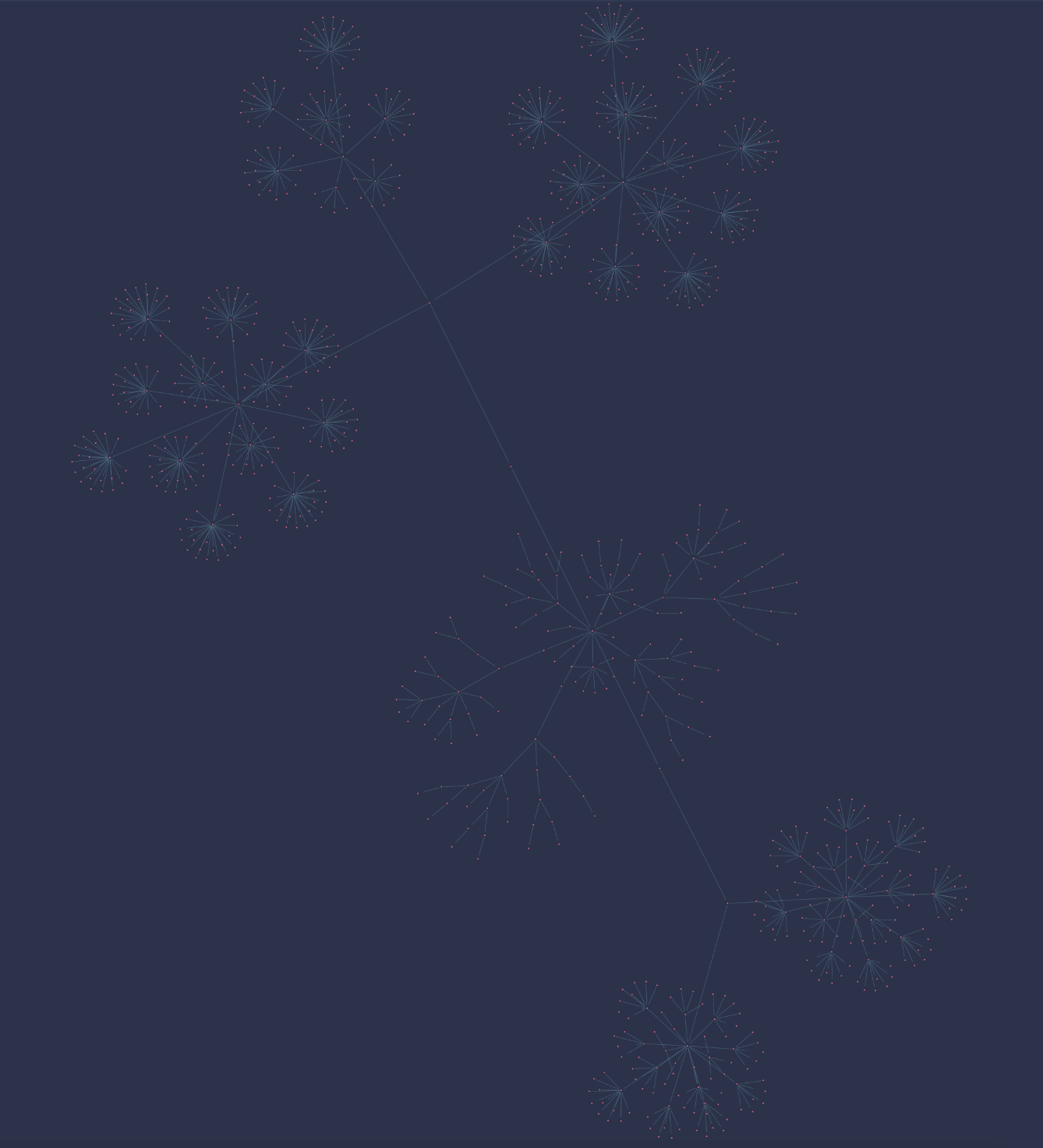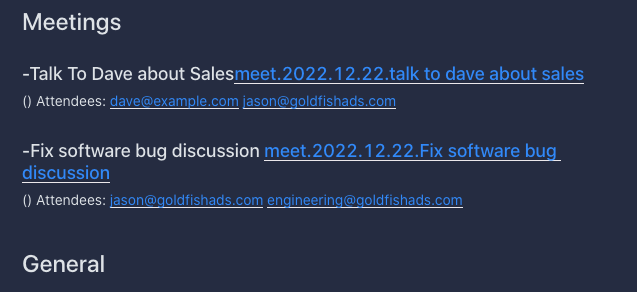A Second Brain
A brief introduction to my personal & work related note taking routine.

Each dot represents a new note. Notes are clustered around topics in a hierarchy.
297 Linked Edges across 927 Notes
For two and a half years, I have been using various markdown note-taking techniques to categorize and save my personal and work-related information. My approach to note-taking has evolved over time, from Mac’s Note Pad, to Evernote, to Obsidian, to the VSCode plugins Foam and Dendron. As of the end of the year 2022, I have settled on Dendron.
In general, the benefit of local storage text-based note-taking is that all the data is transferable between different note-taking applications. All of the “note” information is stored in basic text in a file on my computer. The various different note-taking software packages read these files(usually with their own custom decorators) and serve up your notes in a fancy (or not so fancy) user interface.
Over the two and a half years my goals have been to:
- Quickly make a new note about topics and properly categorize them
- Easily Search notes
- Have notes for work-related meetings (a mini CRM)
- Keep track of TODOs
In 2022 I started using Dendron.io, and this has been my favorite application so far! Prior I was using Foam, but have found that Dendron takes ease of use, customization, and accessibility up to another level.
Note-Taking Structure:
My Vault, as Dendron describes it, is comprised mainly of my Journal, Personal, and Work-Related branches. In addition, I have branches for Technology, Tasks, and Meetings.
The notes are structured in a hierarchy folder-like structure, however instead of actual folders on my computer all notes are single files, and their hierarchical path is created by using “.” as a seperator the file name. For example, my daily journal notes are stored in the hierarchy: Journal>Year>Month>Day.md. Real Example: journal.2022.12.22.md(its just one file at the top level).
Also, one of the best parts of a Roam Research/Zettelkasten note-taking system is you can link to other notes from a note. This creates a web of interlining information building up to your “Second Brain”.
Routine
Every day I run a custom python script that will pull in today’s event from my Google Calender(more on this another day).(another day came)
This script creates:
- One daily Journal File(with link references to the meeting files)
- Meeting files for each event in the day
An example journal Note journal.2022.12.22.md might contain:

For each event, there’s an easily accessible link to the meeting notes file. The meeting notes file has a space for me to input (meeting goals, agenda, meeting minutes, and next steps). This system has kept all my meetings very organized and fewer action items slip after meetings. Stay tuned for a deeper dive into the structure of the meeting notes in a future post.
General Notes
When something comes up during the day that isn’t meeting/task/work-related, maybe I learned something new or come across a neat fact, I quickly add it to an existing note on that topic or create a new one in the corresponding hierarchy. If the new bit of knowledge is related to something I’ve been working on I can add a reference to that note with a backlink.